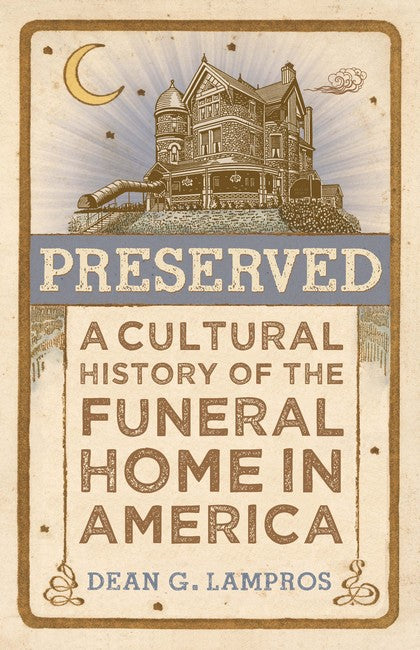Dean G. Lampros (HYDE PARK, MA) is a historian of the built environment, consumer culture, and identity construction. He teaches cultural history and American studies at the Rhode Island School of Design, the Massachusetts College of Art and Design, and Roger Williams University.
Request Academic Copy
Please copy the ISBN for submitting review copy form
Description
Acknowledgments
Introduction: The Other Preservation
Part One: Shifting Spaces
1. Death Downtown: The Landscape of Deathcare before the Residential Funeral Home
2. A New Departure: From Downtown to Residential Neighborhood
Part Two: Contested Landscapes
3. A Constant Reminder of Death: The Funeral Home as a Nuisance
4. A Higher Plane: The Funeral Home as a Symbolic Space
Part Three: A Delicate Balance
5. Luxurious Simplicity: The Funeral Home as a Retail Space
6. From Home Funeral to Funeral Home: The Funeral Home as a Ritual Space
Conclusion: Build Me No Stately Mansions
Notes
Bibliography
Index
Drawing on previously unexamined sources, Preserved offers startling insights on the history of American deathcare, city planning, and adapted Victorian mansions. A compelling analysis of ubiquitous but under-scrutinized buildings, this meticulously researched American studies volume will appeal to students, preservationists, scholars, and the general public.
— William Moore, Boston University, author of Shaker Fever: Americas Twentieth-Century Fascination with a Communitarian, Celibate Sect
Hiding in plain sight, the mansion adaptively used as a funeral home is a building typology that has been overlooked and understudied. With a sense of seriousness and a touch of humor, Dean Lampros studies these buildings to explain their role within the funeral industry, the historic preservation movement, and racial integration.
— Keith Morgan, Professor Emeritus, Boston University

